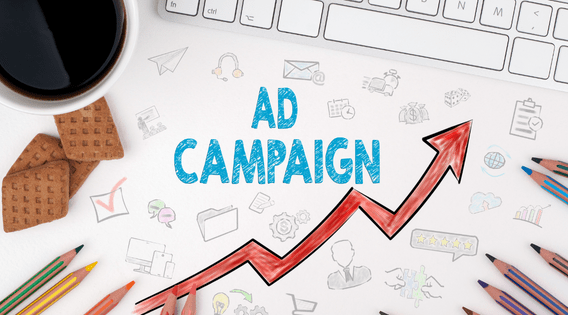Google Ads, previously known as Google AdWords, is an online advertising platform developed by Google. It helps businesses and advertisers create and display advertisements to a broad and targeted audience through Google’s search engine and its advertising network, including partner websites, mobile apps, and video content. These ads appear in search results when users enter relevant search queries or display ads on websites participating in Google’s AdSense program.
How It Works
Google Ads works on a pay-per-click (PPC) model. Advertisers pay only when a user clicks on their ads. The platform offers various advertising options, including text, images, video, and more. This approach allows businesses to tailor their advertising campaigns to reach specific goals and target audiences.
Advertisers can set budgets, bid on keywords, and define the geographic locations where their ads should appear. Google Ads provides detailed performance metrics. So, this approach enables advertisers to track the effectiveness of their campaigns, optimize their ad copy and targeting, and make data-driven decisions to maximize their return on investment (ROI). It is a prevailing tool for businesses looking to promote their products or services, drive website traffic, and increase brand visibility in the digital world.
However, it would help if you scaled your campaigns effectively to leverage their power. Read the following blog content and explore twenty proven strategies to help you maximize your ROI and expand your reach through Google Ads.
1: Set Clear Objectives
Your journey to scaling begins with well-defined goals. Whether boosting sales, driving website traffic, or increasing brand awareness, clarity in your objectives is the foundation of effective scaling.
2: Keyword Expansion
Continuously expand your keyword list by adding high-performing, long-tail, and negative keywords to target the right audience.
3: Elevate Quality Scores
Optimize ad quality by creating relevant ad copy and improving landing page quality. Higher quality scores result in better ad placement and lower costs per click.
4: Ad Extensions
Utilize ad extensions to provide extra information, such as site links, callouts, and structured snippets. These make your ads more informative and appealing.
5: A/B Testing Perfection
Regularly run A/B tests to compare ad variations, headlines, and images. This frequent process fine-tunes your ads for maximum effectiveness.
6: Geographic Targeting
Geo-targeting focuses your ads on specific locations, ensuring your campaigns reach a relevant audience in different regions.
7: Strategic Ad Scheduling
Analyze performance data to determine the most effective times and days for ad display. Adjust your ad schedule to improve ROI and save on costs.
8: Remarketing Tactics
Implement remarketing campaigns to re-engage users who have visited your website before. It increases conversion rates.
9: Landing Page Optimization
Your landing page is the ultimate destination for users clicking on your ads. Make sure it is user-friendly, fast-loading, and optimized for conversions.
10: Budget Allocation
Carefully allocate your budget to different campaigns and ad groups based on their performance. Allocate more to high-performing campaigns and reduce investment in campaigns that perform poorly.
11: Bid Strategy
Select the right bidding strategy, whether manual, automated, or hybrid, and optimize your return on ad spend (ROAS).
12: Ad Copy and Creatives
Create credible ad copy and visually appealing creatives that resonate with your target audience. Test various ad variations to find the most effective messaging.
13: Competitor Analysis
Monitor your competitors’ ads and strategies to gain valuable insights and maintain competitiveness in your niche.
14: Conversion Tracking
Implement conversion tracking to measure the success of your campaigns. This data is essential for making informed decisions and optimizing ad spending.
15: Scaling Gradually
Avoid rushing the scaling process. The gradual expansion allows you to monitor changes and make necessary adjustments. It reduces the risk of budget waste.
16: Ad Placement Optimization
Evaluate ad performance on different platforms within the Google Ads network, such as Search, Display, YouTube, and more. Prioritize platforms that deliver the best results for your goals.
17: Dynamic Keyword Insertion
Employ dynamic keyword insertion (DKI) in your ad copy to customize text based on the search query and enhance relevancy and click-through rates.
18: Ad Scheduling Exclusions
Use ad scheduling exclusions to prevent ads from displaying during unproductive times. It saves money and improves efficiency.
19: Advanced Targeting Options
Explore advanced targeting options like in-market audiences and custom intent audiences to reach users actively researching products or services similar to yours.
20: Leverage AI and Automation
Embrace the power of artificial intelligence and automation tools within Google Ads. Machine learning algorithms can optimize your campaigns in real time, adjusting bids, targeting, and ad scheduling based on performance data.
Also Read,
Facebook Ads vs. Google Ads: What’s better for your business?
Scaling your Google Ads campaigns effectively requires a reliable approach that combines strategic planning, continuous optimization, and data-driven decisions. By setting clear objectives, refining your keyword strategy, elevating ad quality, and implementing the twenty proven strategies outlined in this guide, you can unlock the full potential of Google Ads and achieve higher ROI. Effective scaling is a journey, not a destination, marked by precision, strategy, and unwavering commitment. With these strategies in your virtual store, you are well-equipped to master the art of scaling your Google Ads campaigns.
